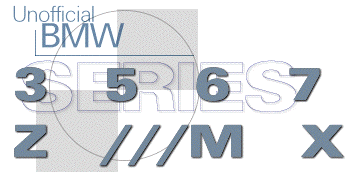|
Ron Stygar Carl Buckland Dale Beuning Forums Help
Subject: Let's teach Bob to Heel & Toe Bob Collins wrote...
>I have heard the phrase "heel and toe" so many times, but I really am [...] I've written this before, once more for good measure... I'll start by identifying the benefits of matching engine speed when downshifting, which ultimately is also the key benefit of heel & toe. Downshifting: I guess the secret to a long lasting gearbox, less engine wear and smoother shifting is to match revs when doing so. Try driving at a steady speed in 4th gear (80kph or 50mph is good). Check the engine speed. Let's say 3000 rpm for the sake of argument (which we all know is NOT the exact speed). Downshift to 3rd. Let's assume the engine now revs around 3500 rpm. When you downshifted, chances are the car lurched because the gearbox is suddenly putting additional strain on the engine. If you were on snow or ice, or even possibly in rain, you would certainly have lost traction and fishtailed. Put the car back in 4th. Let's try again. This time, clutch in, blip the accelerator (a blip is like a stab or jab -- quick) to get the revs up to, say, 3600 or 3700 rpm. While you blip the throttle, put the car in 3rd. Now clutch out. If your timing is right, the extra 100 or so rpm was lost somewhere in this exercise, and you should be letting the clutch go at around 3500 rpm, which is precisely the engine speed required for 50 mph in 3rd. If all was performed admirably, you shouldn't feel the downshift at all. Upshifting: This is simple. let's assume same speed, 3rd gear. Clutch in, put car in 4th, allow revs to fall to 3000, clutch out. You shouldn't feel a thing. Practice: Before even attempting to heel & toe, you must get the shifting right. Starting out, I found that the 4th-3rd exercise is the easiest. Practice this often, downshifting, upshifting, over and over. Then start varying your speed a bit. Naturally, this will require a different amount of throttle input to match revs for the lower gear. Then start practicing the 5-4 and 3-2 shift. 2-1 is hard, it'll take ages. The only advice I can give here: you must get to the point where you just 'feel' the engine and you just 'know' how much throttle is required for a downshift, or how long to wait for an upshift. You guys with 8 gazillion gigawatts of stereos and amps might want to turn down the music a bit to hear the engine. Believe me, once you get the hang of this, it's very rewarding. Try taking a passenger along to get their input on whether they feel the up/downshifts. Heel & Toe Why: specifically on a racecourse, let's say you're barreling down a straight at 6000 rpm in 4th, approaching a hard 90 degree right hander. Fun, eh? You need to be in 2nd to exit the corner with optimum available power. Somewhere in about 100 feet of space, you must brake REAL hard, and also snap off two downshifts before turning in. You can't shift first, obviously, if your engine is already near redline. You can't brake a bit, and then let off to downshift -- there's just not enough room and you'll unsettle the car (the front would become light, and you'd loose turning traction). It would be much more efficient if you combine these two actions (braking and downshifting). How: Heel & toe could be realistically referred to as ball & edge, especially in the BMW with its pedal placement. You brake with the ball of your right foot (below the big toe) on the right hand 1/2 -1/4 of the brake pedal. The right edge of your foot is now available to pivot towards the accelerator for 'blip' duty. Remember not to change the pressure being applied on the brake. You must practice this well. Get used to only ever using the right hand 1/2 - 1/4 of the brake pedal, and also get used to how much effort is required in any braking situation. Now, Bob, let's put ourselves back on that straight, at 6000 rpm in 4th with 100 feet to brake and downshift to 2nd. Your mirrors are full of cars, sweat is dripping off your brow, your heart is pounding, you've got the line for the corner and there's no room for error. Are you with me here, Bob? The guy behind you and to the right is looking for a late braking opportunity if you mess up. You decide to cut your braking distance by 10 feet or so...Hard on the binders! 50 feet. Engine must be down to about 4000 now...clutch in...blip the throttle with the right edge of your foot...5500 rpm...downshift to 3rd...clutch out...30 feet...your competition gives you the line...4000 rpm...clutch in...blip again...5500 rpm...downshift to 2nd...clutch out...0 feet...4500 rpm...gently off the brakes...turn in...balance, balance...scrub off a little speed...4250 rpm...peak torque...nearing the apex...floor it!...upshift to 3rd...you're gone...he's dust! You take the checkered flag, kiss the bikini-clad women, and sign autographs until it hurts. If anyone asks, yes, I suppose you could have downshifted from 4th to 2nd. This technique does have benefits on the street in accident avoidance (brake, downshift, change lanes and accelerate hard out of someone's way), or just plain fun on your favourite twisties. Another piece of advice: if trying heel & toe on the street, remember to get your foot off the throttle after you blip. It's a very easy to be braking and find yourself applying some force on the accelerator without intention. It's scary, and I've done it. Hope that helps a bit. Shawn '95 318ti | Jet Black, partial M Technic | Sport | M Contour, S-02, K&N, PBR, Stebro | Mississauga, Ontario, Canada, North America, Earth... |

